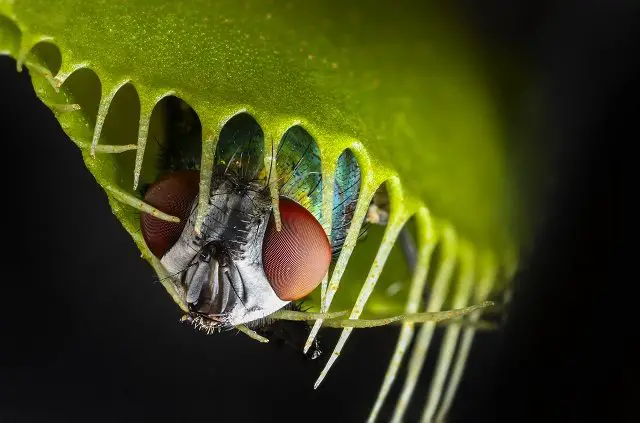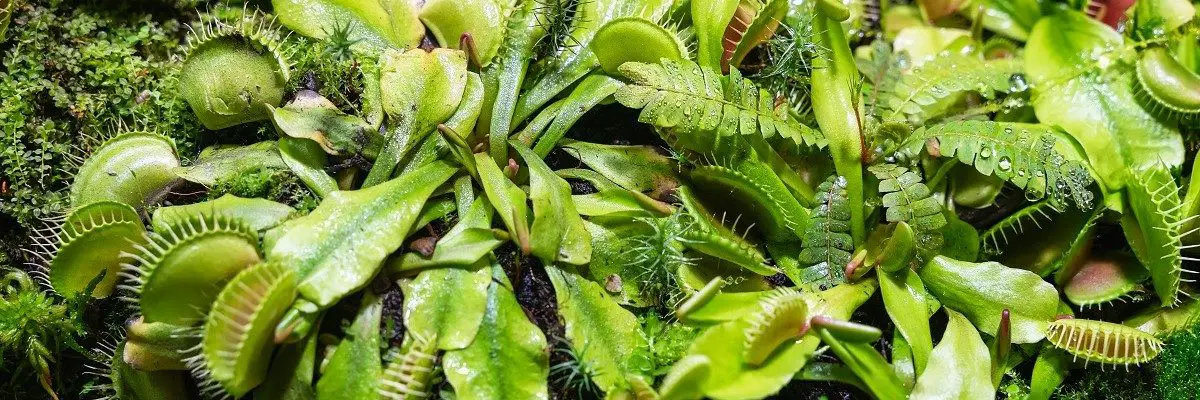What Is The Most Famous Carnivorous Plant?: You’ve probably heard of the Venus Flytrap before. It’s a carnivorous plant that has captivated us with its unique ability to trap and digest insects. But why is it so famous? This article will explore what makes the Venus Flytrap stand out from other carnivorous plants and why it’s become a cultural icon. We’ll look at its trapping mechanism, insect diet, adaptive evolution, habitat and ecology, cultivation and care requirements, as well as its cultural significance. So if you’re curious about what sets this insect-eating species apart from others, read on!
Venus Flytrap
You probably know the Venus Flytrap as the iconic bug-munching carnivorous plant, but it’s actually a lot smarter than you might think! Its lifespan is surprisingly long – up to 20 years in some cases – and it has adapted to reproduce through cloning. This ensures that its genetic diversity remains high. What’s more, its feeding behavior is incredibly efficient; with just one bite of prey, it can generate enough energy for several days’ worth of growth.
The Venus Flytrap is also at the center of many conservation efforts due to its declining population in the wild. Organizations like The Nature Conservancy have been working hard to restore their habitats and protect them from poachers who illegally harvest them for sale on the black market. Additionally, botanists are studying ways to crossbreed different varieties of this species in order to create new hybrids that can better survive in changing climates.
Venus Flytraps may be small creatures, but they demonstrate remarkable resilience and intelligence. From their long lifespans and complex reproductive strategies to their adaptive feeding behaviors and conservation efforts, these plants continue to captivate scientists around the world with their impressive skillset.
This iconic species has become much more than just an interesting curiosity; rather, it serves as an important reminder of how even tiny organisms can have a profound impact on our world. It’s time we give these amazing plants the respect they deserve!
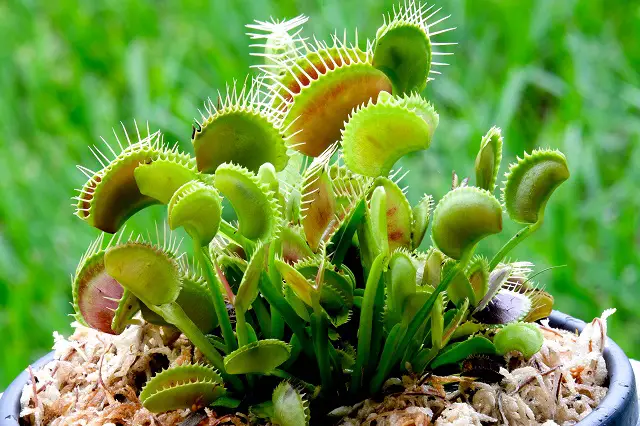
Trap Mechanism
When triggered, the Venus Flytrap swiftly snaps shut its hinged leaves to capture unsuspecting prey. This snap reaction is made possible by a unique combination of trigger hairs and rapid closure. The plant has two sensitive trigger hairs located near the center of its leaves that detect when an insect or other small animal touches them. When both are touched at the same time, it sends a signal to the trap to close in fewer than 100 milliseconds. This incredibly fast response allows the plant to catch and digest its prey before they can escape.
The digestive process begins as soon as prey is caught in the trap. As it does with all forms of digestion, enzymes break down proteins which provide energy for growth and reproduction. However, since this is a carnivorous plant, digestive enzymes must be secreted from special glands on each leaf lobe rather than from an internal digestive tract like most animals do. These glands secrete juices that break down proteins into amino acids which are then absorbed by the plant’s roots through specialized cells within each lobe of their leaf traps.
Inside these lobes are also found several other adaptations which help make capturing prey easier for the Venus Flytrap such as stiff bristles around its edges which act as barriers so insects cannot escape once they enter and downward pointing hairs that prevent rainwater from entering and diluting essential nutrients inside the trap itself. It also features waxy coating on each lobe making it difficult for insects to find traction or hold onto while trying to escape – ultimately ensuring their capture every time!
Venus Flytraps have evolved over millions of years utilizing this efficient trapping mechanism to survive in challenging environments where resources may be limited or hard to come by otherwise – giving them an advantage over many other plants!
Insect Diet
The Venus Flytrap’s diet primarily consists of insects, which it captures and digests with a single snap of its hinged leaves. In order to meet its nutritional requirements, the plant relies on the nutrients provided by these bugs. The flytrap lures in unsuspecting prey with nectar secreted from its leaves, then quickly snaps them shut around any small critters that are curious enough to explore. This trap mechanism has evolved over millions of years to become one of the most efficient hunting devices in the plant kingdom.
Once captured, digestive enzymes are released into the trap which break down proteins and fats from the bugs’ bodies into usable energy for the plant. As well as using this energy for growth and reproduction, some species also use it to fuel their carnivorous feeding behavior – allowing them to catch multiple meals over a short period of time.
This specialized adaptation has proven extremely successful when compared to other plants in similar environments – making it an evolutionary success story! It is even able to survive periods of food scarcity by relying on stored energy reserves until conditions improve once again. Although there are many other carnivorous plants out there, none can quite match up with the Venus Flytrap’s impressive predatory skills or its iconic status among scientists and nature enthusiasts alike!
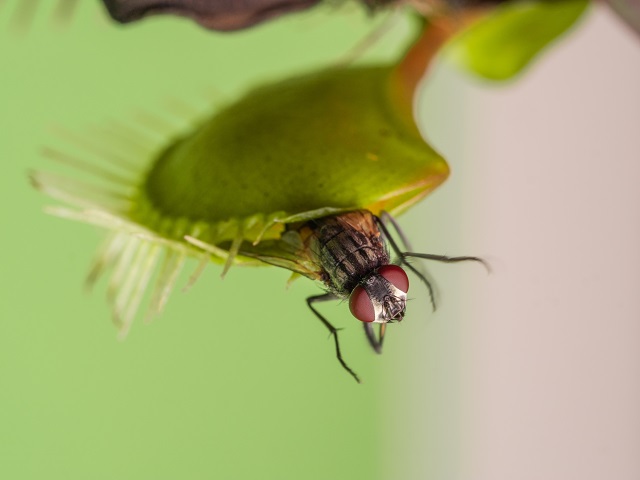
Adaptive Evolution
Evolution’s equipped the Venus Flytrap with a powerful adaptation, allowing it to outwit most of its competitors and become an iconic figure among nature lovers. A complex interplay between natural selection, genetic variation, coevolution with prey, and environmental pressures has enabled this incredible species to evolve some remarkable evolutionary adaptations.
For instance, the Venus Flytrap has adapted extremely sensitive trigger hairs on its leaves that can detect when prey is present. This enables them to capture insects with precision timing and speed, that gives them a major advantage over other carnivorous plants in acquiring nutrients from their environment.
The plant also exhibits a unique ability to “learn” from experiences with different types of prey. Over time they’ve developed specialized mechanisms for digesting typical insect meals like flies or ants more efficiently than larger animals like lizards or mice – an impressive feat of evolutionary engineering!
These amazing characteristics demonstrate how the Venus Flytrap has managed to thrive in its native habitat despite the challenges posed by changing conditions and competing predators. It’s no wonder that this remarkable species has captured the attention of so many people around the world!
Habitat and Ecology
You’ll find the Venus Flytrap in its native habitat of wetland areas and bogs, where its remarkable adaptation to the environment has enabled it to survive amongst other creatures. The unique ecological role that this carnivorous plant plays is twofold; firstly, it captures prey such as insects which helps to control their population numbers in the area. Secondly, it also provides an important pollination service for other plants nearby. It’s no wonder then why conservation efforts are being made to ensure that these natural habitats remain undisturbed and intact so that the Venus Flytrap can continue to thrive in its chosen environment.
The Venus Flytrap has extraordinary methods of capturing its prey by using a combination of dew-covered leaves with sensitive trigger hairs on them. As soon as an insect lands on one of these leaves and touches several trigger hairs, the plant will snap shut around it within milliseconds – trapping whatever unfortunate creature was unlucky enough to land there! This adaptability shows just how well suited this plant is for life in wetland areas, where food sources may be scarce or difficult to access due to the terrain.
In addition, a big part of keeping this species alive is making sure that their natural habitats remain largely undisturbed from human activity so they can continue their vital role in controlling insect populations and providing essential pollination services for other plants nearby. Conservationists believe that protecting these environments could have positive implications not only for preserving the Venus Flytrap but also for helping local ecosystems remain healthy and balanced too.
In order to protect this valuable species, we must work together across multiple levels – from local communities all the way up through government – if we are serious about maintaining viable habitats in which they can survive and flourish over time. Without concerted efforts like these, our beloved Venus Flytraps could eventually become extinct – something none of us would want!
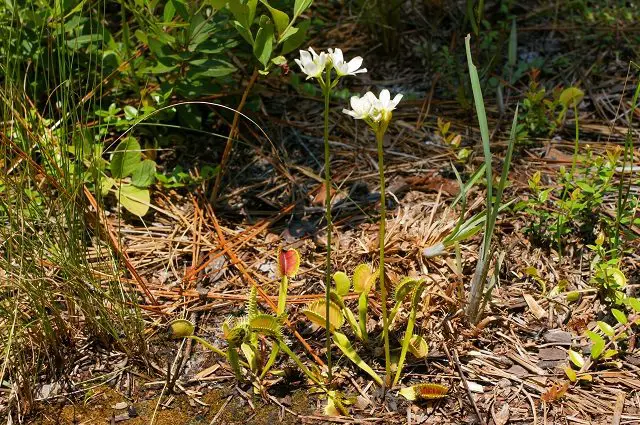
Cultivation and Care
Caring for a Venus Flytrap is surprisingly easy and rewarding! The plant’s native environment is the nutrient-poor wetlands of North and South Carolina. So, when cultivating this unique species, replicating their natural environment is key to their longevity.
| Watering Frequency | Soil Requirements |
|---|---|
| Rainwater or distilled water only | Sphagnum moss or soil with 1/4 sand mixed in |
| Once every 2 weeks | Moist but not soggy |
When caring for your Venus Flytrap, they will need direct sunlight exposure throughout the day. For optimal growth, keep temperatures between 70°F (21°C) and 85°F (29°C). It is also important to check for pests that can damage the plant such as aphids or mealybugs. If these are found, use a natural insecticide such as neem oil spray to remove them.
Finally, if you provide these conditions, your Venus Flytrap will thrive! With regular care, you can enjoy watching it catch insects and admire its beauty for years to come.
Cultural Significance
The Venus Flytrap has been a symbol of artistry and nature’s persistence, like a shining beacon in the dark. It is one of the most famous carnivorous plants, and has had a wide range of cultural significance throughout history. Historical references to the plant can be found as far back as 1768, when Swedish botanist Carl Linnaeus first described it. Artistic representations of Venus Flytraps are abundant, with many modern artists depicting them in their works. The plant also appears in various forms of literature, where its symbolism often represents the balance between life and death or good and evil.
In mythology, the Venus Flytrap is sometimes used as a representation of fate or an omen for future events. Its use in traditional medicine dates back centuries, with remedies made from its parts being given to treat coughs and other ailments. In some cultures, it was believed that consuming flytraps could give someone supernatural powers such as invincibility or invisibility. Today, many people still consider these plants to be magical due to their complex anatomy and ability to catch insects using cunning tactics such as luring prey into its trap-like leaves using nectar secreted by glands on its surface.
Venus Flytraps have become iconic symbols within popular culture over time due to their mysterious nature and carnivorous habits – something that isn’t seen very often among plants. They appear frequently in films and television shows where they may represent danger or mystery; this association has been further strengthened by video games that feature them prominently as both enemies and allies alike.
The legacy left behind by this enigmatic species will no doubt continue long into the future; despite being relatively small in size compared to other species, it has managed to capture imaginations around the world for centuries thanks largely to its unique characteristics that set it apart from other plants. From mysterious folklore tales about magical cures right through to modern day depictions of them on screens large and small – Venus Flytraps remain an integral part of our cultural landscape today.
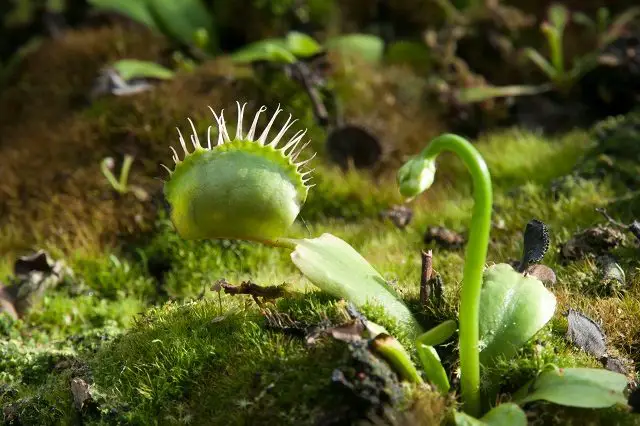
Frequently Asked Questions
| Topic | Detailed Information |
|---|---|
| Digestion Time | After an insect enters a Venus flytrap, the plant closes and starts secreting digestive enzymes. The digestion process varies with the type of insect, taking anywhere from five to twelve days. The flytrap absorbs nutrients directly from its prey during this period. Proper soil conditions and humidity levels also play crucial roles in the digestion process. |
| Feeding Frequency | Venus flytraps need to feed on insects to survive. In their natural habitat, they consume various types of insects. For domestic Venus flytraps, small insects like ants or fruit flies are ideal. For optimal growth, the plant also requires well-drained soil kept moist and bright, indirect sunlight. The frequency of watering may vary based on the plant’s location – outdoor plants might need more frequent watering than indoor ones. |
| Maximum Size | A Venus flytrap can grow up to 7 inches in diameter when properly cared for. This involves regular watering, planting in nutrient-rich soil, providing several hours of sunlight exposure daily, and implementing regular pest control. The plant starts producing flowers when it is at least three years old. |
| Ideal Temperature | The preferred temperature for a Venus Flytrap is between 70-80°F during the growing season (spring to fall). In addition to temperature control, it’s important to provide adequate light, water, soil choice, and other growth requirements to keep the plant healthy. The soil should be nutrient-rich but well-drained, and the plant needs regular watering to keep the soil moist, but not soggy. Direct sunlight is preferred, but partial shade can work if temperatures rise above 80°F. |
| Propagation | Venus flytraps can be propagated, though this process requires careful attention to specific feeding requirements, planting techniques, light needs, a dormancy period, and specific soil types. Nutrient-poor soil that remains consistently moist is ideal. The plant needs ample direct sunlight and temperatures between 70-85°F for optimal growth. A minimum of 2 months of dormancy every year is also crucial. With proper care and the right conditions, Venus flytraps can be successfully propagated. |
Conclusion
You’ve learned that the Venus Flytrap is the most famous of all carnivorous plants. It’s trap mechanism, insect diet, adaptive evolution and habitat are remarkable and have made it a cultural icon. With proper care and cultivation, you can experience the joy of owning this amazing plant yourself. With its unique characteristics, the Venus Flytrap has come to symbolize nature’s adaptability as well as our own human ingenuity. So if you’re looking for an unusual and fascinating addition to your home or garden, look no further than the Venus Flytrap!
